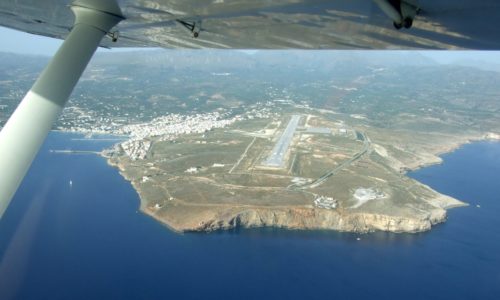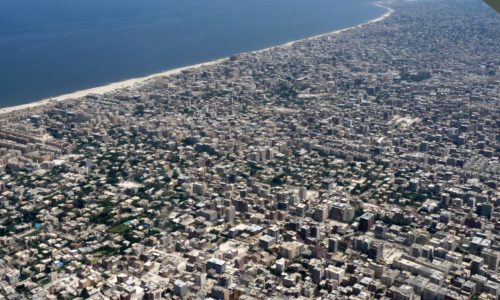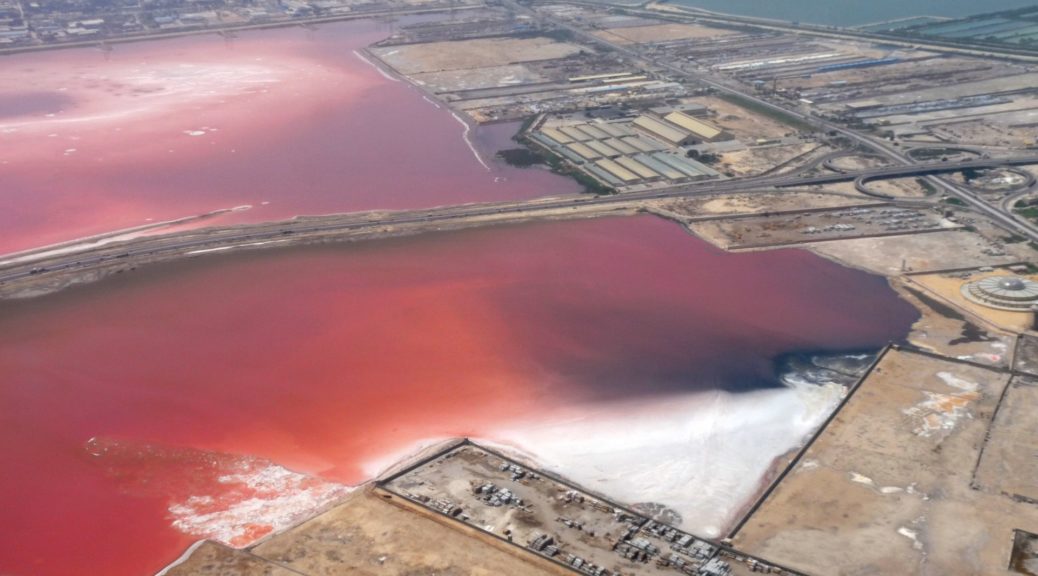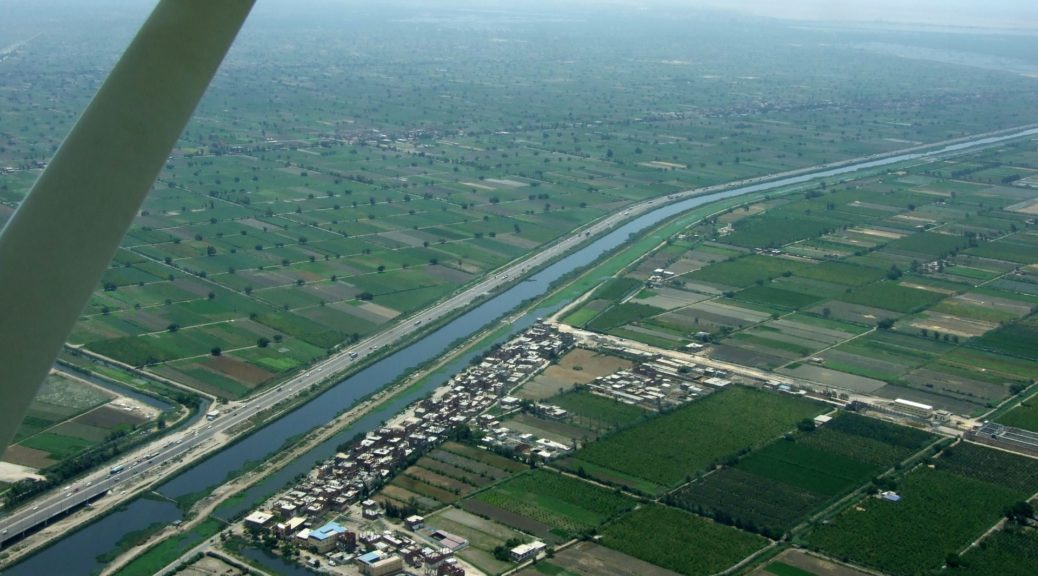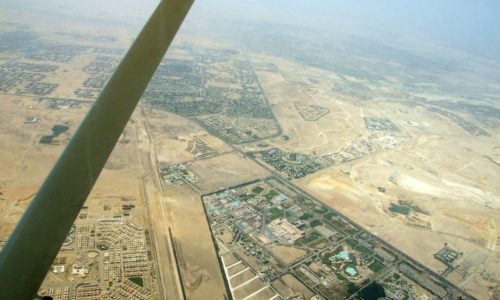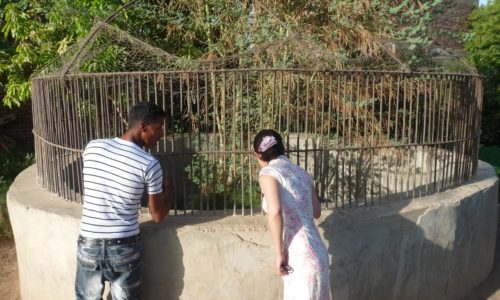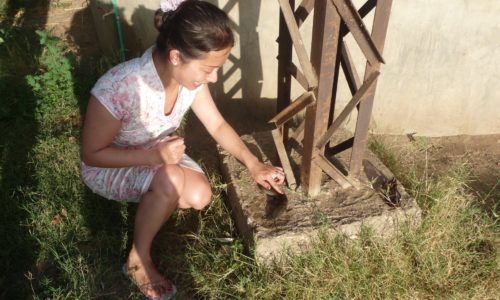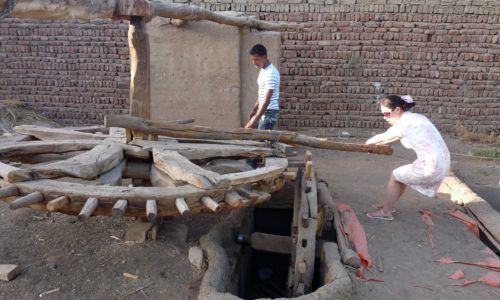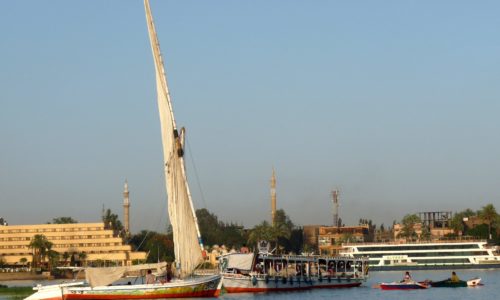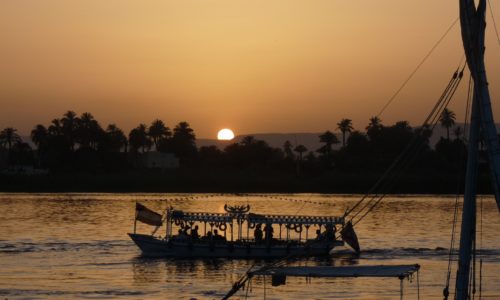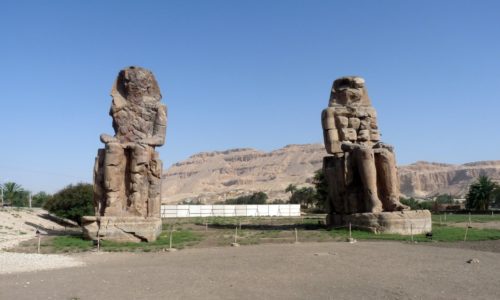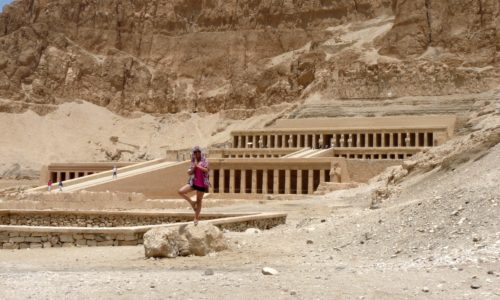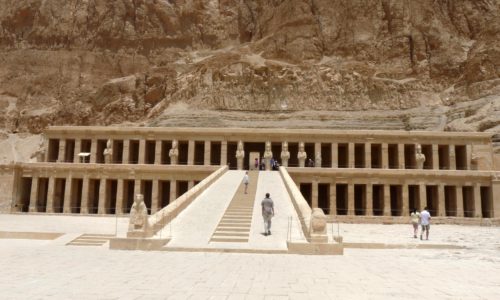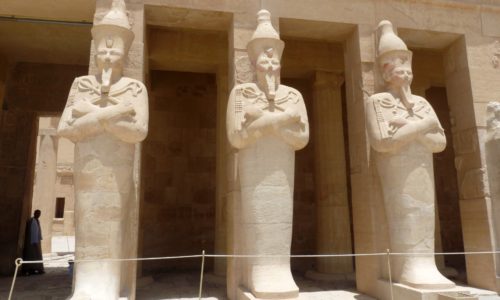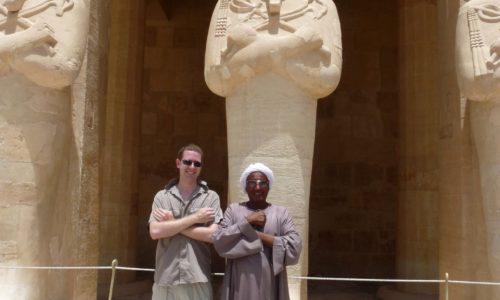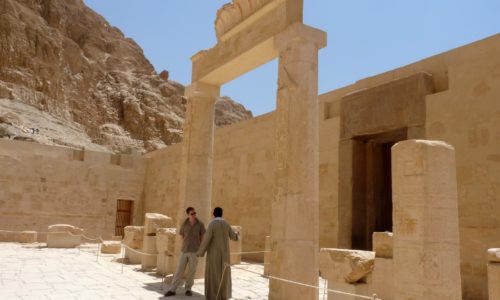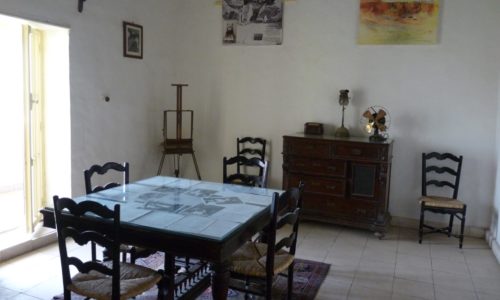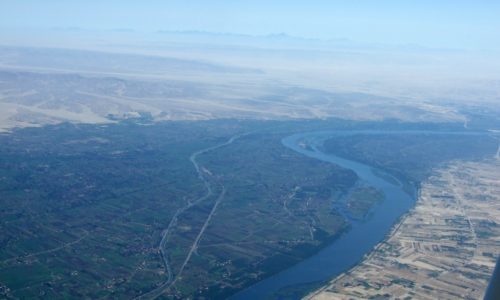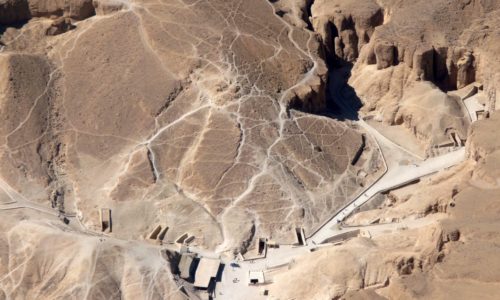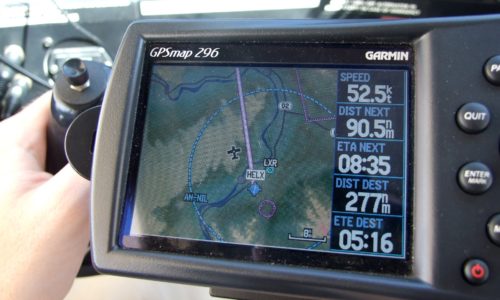Egypt – Exploring Egypt
We arrived at Sitia airport unreasonably early, and I made my way to the control tower to book out. We were charged for 2 extra days parking (at 1.60 Euros per day, not unreasonable), and the airport manager happily told me that he’d received our flight plan and that we were good to go. We made our way back to the aircraft and loaded up in a now familiar routine, before taxiing out and taking off.
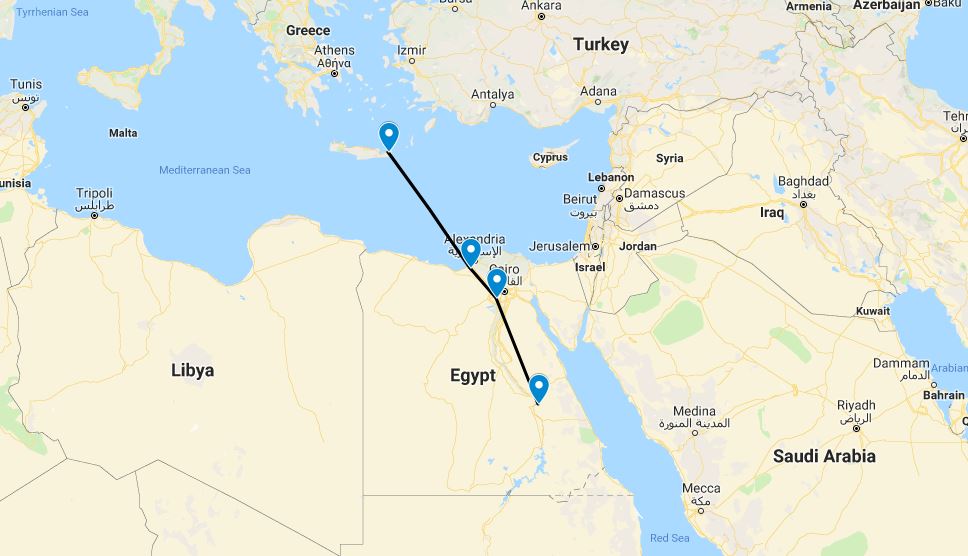
We were flying on an IFR flight plan this time (although would remain VMC, given our lack of Artificial Horizon), as we had been informed by Ahmed that VFR flight plans would not be accepted; I’ve heard differing views on this but we were very happy to accept Ahmed’s advice, and things did indeed go smoothly. We climbed to FL85, the minimum altitude that Cairo would accept us at, and set course for the reporting point to enter the Cairo FIR (Flight Information Region – Egyptian airspace, basically). Athens Control handed us off to Cairo, but we were still 200 nautical miles out and could not make contact; a passing British Airways flight helpfully relayed our messages for us, though. The haze was thick, and I flew on instruments, using partial panel as we still did not trust the attitude indicator; a combination of turn and slip indicator, vertical speed indicator, and altimeter were more than enough to comfortably cruise straight and level, particularly given that the sea was always clearly visible when looking down! A couple of hours later we were descending into the thick smog and oppressive heat over the sprawling city of Alexandria.
We landed on runway 04 after being vectored to an instrument approach, and taxiied to the apron. We were met by a pair of National Aviation vehicles (our “handling agents”), and six Egyptians who buzzed around the aircraft, chocking our wheels with chocks that would have been more appropriate for an Airbus, and surrounding the aircraft with traffic cones. Moments later a full size bus turned up, more suited for emptying an airliner, and we were driven the 100 metres to the terminal building.
Our passports were taken away by the agents for visas and I was given a cursory quiz by customs, who had a brief look in the top of Annie’s bag before moving on to more important matters like the Royal Wedding and the recent Revolution. An hour later, during which Ahmed phoned in and arranged for our landing fees to be waived, and we were back on our giant bus to the aircraft for the short flight to 6th October Airport.
After takeoff we were once again sent up to FL85, which was again a slow affair; although we had burnt off a few hours fuel, the hot air reduced aircraft performance. We were directed in towards Cairo before being vectored back out to 6th October, and enjoyed perfect views of the Cairo Pyramids as we passed overhead. The hand-off to 6th October was complicated by our being given the wrong frequency by Cairo Director, but after a few minutes circling overhead the field at FL60 we established contact and were cleared to descend and land. Curiously, 6th October Airport seems to be named after the starting date of a war in which Egypt initially did well, and were then thoroughly crushed. I’m not sure why they want to remember it, but maybe they have their reasons.
As we taxied in to park, Ahmed Eddie and their friend Daniel walked out to meet us. They came bearing cold drinks and cheeseburgers, which were very well received, and we rested in the cool air of the terminal while their engineers serviced our vacuum system in an attempt to fix the instrument problems we’d been experiencing. This done, our three GASE friends vanished and re-appeared with 120 litres of fuel in jerry cans, which we siphoned into the aircraft. A short delay then entailed while we waited for our flight plan to come through, and we headed back out to the runway with seconds to spare for our 3 hour flight to Luxor. Throughout our entire stay Ahmed had been rushing around non-stop arranging and organising; he’s a busy man! He managed to organise to have most charges waived however, and troubleshot all kinds of flight plan problems; we were lucky he was there.
We climbed overheard the field to 4,000ft before being cleared on course, and intercepting the airway that would lead us to Luxor. We were taken way out into the desert as the Nile curved away and disappeared, and for two hours cruised across the vast, empty Sahara. Every now and then a pristine tarmac road would cross our route; where they went to, and how they keep them clear, is a mystery. We didn’t spot a single vehicle. An hour out from Luxor it was getting strangely dark, and then my GPS beeped; “Sunset, switching to night mode”. It turns out that, while I had checked sunset times and confirmed they were in local time, my source had failed to mention that these times were Egyptian summer time; which had been cancelled this year, meaning my times were an hour out. We flew on into the twilight and re-approached the Nile as lights winked on along the riverbank, and then Luxor came into view ahead. We landed in darkness, and were taken to our hotel by our agents at National Aviation where, after a long journey across Europe and Africa, we were reunited with Iain, and enjoyed a leisurely dinner at the hotel in 30 degree heat.
The one problem from our day, it turned out, had occurred at 6th October; after refueling, the fuel caps on the left wing were not replaced. As we taxied out, they fell off, un-noticed. Thankfully they were visible in Eddie’s photos; on the wing one moment, and gone the next, so the search area was small and we had high hopes of retrieving them!
We settled in to the very comfortable Sheraton hotel (a bargain at 37 Euros per night!), for two days off from flying. Iain and Sam were continuing to work on the permits, but it was seeming very likely that we wouldn’t be heading into Sudan; one option was simply to take of and fly there without a permit, hoping for the best, but the prospect of a Sudanese jail cell rather outweighed the possibility of success from my point of view. Additionally, with the poorer than hoped performance from the aircraft in terms of range, and the strong headwinds we’d face on the way back, the fuel situation for the flight looked more marginal than first expected.
Luxor, however, was not a bad place to spend some time. We relaxed on the first day, reading and enjoying some time off. In the evening we went on a sunset cruise across the Nile to Banana Island, crewed by an Egyptian man who assured me that his name really was Bob Marley. Anything’s possible. The island was covered in, unsurprisingly, banana groves (as well as plenty of other fruits), and Bob leapt into the crocodile pit (which was devoid of crocodiles) and located us a catfish as a sort of consolation prize. It flapped around all over the place and covered us in mud before we threw it back. We were presented with a bunch of the bananas, much smaller and sweeter than normal bananas, and sat and ate as we chatted with Bob. The revolution, he said, had really slowed tourism, and June was normally a slow month anyway. We were his first customers all day. We puttered back across the river and dined with Iain in the hotel restaurant, listening to tales of his earlier flying days. He has had a fascinating time, from advertising copywriter to airliner operator, and we enjoyed his stories well into the night before retiring to bed.
With still no news on our clearance, we rose early on our second day in Luxor to visit the Valley of the Kings. The state of tourism there was hinted at by the fact that we were the only people on the tour, and we headed off in a comfortable bus with our tour guide, Eraky. He had studied Egyptology for several years in Cairo and London and was extremely knowledgeable, as well as having an entertaining grasp of English phrases such as “silly buggers”. All of the vendors trying to press tourist tat on us, for example, were “silly buggers”. We were informed that all the vendors were Chinese, but they looked remarkably Egyptian to us.
The Valley of the Kings was much smaller than I had expected. It’s impressive how many tombs are packed into such a small space. The newly built visitor centre has a transparent 3D model of the valley showing the tombs and it is amazing to see the depth and ingenuity of some of the designs! We visited three tombs, across the whole range from shallow horizontal to extensive deep excavations. One of the most amazing features is how strong and vibrant the colours are on the decoration even after all this time. After a few hours in the Valley, we returned to our bus and drove the long way around to the Memorial Temple of Hapshepsut. The heat was blistering by now and we stuck to the shade, hurrying from shadow to shadow! Our final stop was at the house of Howard Carter, one of the discoverers of the Tomb of Tutankhamun; it was preserved just as it would have been when he was there, and it was fascinating to see how they lived and imagine oneself there back in that time!
The aircraft owner, Iain, accompanied us to Luxor airport to at least catch a glimpse of his aircraft after its long journey. Our handling agents collected us from the hotel and led us swiftly through the large terminal to the departures lounge. As we looked out the window to the aircraft, alone in the middle of the giant apron and with its wheels dwarfed by three sets of airliner-scale chocks, the agents established that Iain was not actually going to fly with us. This caused great consternation and rapid-fire Arabic discussions, as it turns out people who aren’t flying are not technically allowed through to the lounge. A story is established, that Iain has forgotten something and needs to return to the hotel, and one of our agents disappeared off with him as we were transported back to Bucky on board another giant bus.
Refueling was carried out from a bowser that looked like it was left over when the British left Egypt more than 50 years ago. Given our lack of fuel caps for the auxiliary wing tanks, I put only a small amount of fuel in them and fill the mains. At nearly $5 per litre, there’s no reason to fill up with more Avgas than needed, anyway! The flight would be slow, given the strong headwind, but we did not have much further to go after arrival at 6th October Airport, where our expert ground crew would be waiting with all the fuel we needed!

As we took off, our route took us over the archaeological sites which we had visited the day before. A request to ATC to allow us an orbit to gain height before the high ground was granted, and by pure chance took us perfectly overhead the Valley of the Kings and the Memorial Temple of Hapshepsut. After snapping few photographs, and marveling at how close the two sites are when viewed from above, we continued climbing into the stiff headwind and set course for the 4 hour flight to 6th October.
We soon left the Nile valley and headed directly towards Cairo, crossing the desert for several hours. It seems vast and empty, and mostly it is; but sometimes one crosses a highway, seemingly newly built and extending from horizon to horizon. Of course, sometimes this horizon is not so far away, given the haze that arises in the desert when the air and land seem to blend into one; one is required to keep a regular check directly below, and refer to instruments, to ensure that the aircraft is remaining straight and level. This was more difficult given the lack of a reliable artificial horizon, but still entirely possible and routine using only the other instruments.
As we drew closer to Cairo, more signs of civilization began to appear; first some quarries in the middle of the desert, then the Nile valley began to come back into view. Soon after entering the Cairo control zone we were radar vectored towards 6th October. I had elected to run one tank as low as possible on fuel on this leg; given our lack of caps on the auxiliary fuel tanks I wanted to be sure how much fuel I could really get from the mains. A few miles from 6th October, still at 8500ft, the engine spluttered and ran down; a swift change to the other main tank, still half full, brought it straight back to life. Interestingly, the aircraft would carry on running for a good half hour after the fuel gauge reached empty; something I never planned to rely on!
After an uneventful landing at 6th October, we were met by the GASE ground crew who turned up with 175 litres of fuel for us. The security team at 6th October were used to them by now and they made it through to the apron without too much trouble; we didn’t even have a policeman watching our every move this time! Ahmed obtained permission for myself, Eddie and Dan to go and look for the missing fuel caps – a thorough search produced nothing, but as we were giving up a call came from Ahmed telling us to return immediately. Thinking that security had decided we couldn’t look any more we hurried back; to find that Ahmed had located one of the caps with an airport worker! The final cap never surfaced, but three would do nicely.
Cap recovered, we refueled with our siphon from the jerry cans, and then ensured all fuel caps were securely in place. The plan now was to re-position the aircraft the 30 miles to Cairo International; the ladies would go with Eddie and Dan in the GASE bus, and Ahmed would fly with me to Cairo. Ahmed, an aviation enthusiast, was more than competent to handle the radio for me, with the added bonus that he could chat in Arabic to the controllers. Our route took us over the pyramids and into Cairo International from the East, landing on the Northern-most runway between airliner arrivals. As we taxied off the runway, an exchange took place between Ahmed and the controller in Arabic. It turned out that the controller had been asking how big our aircraft was; he was confused because he could not see us! We followed the follow-me car to parking, only pausing while it chased off after a truck who had crossed our path without authorisation and give him a ticket. I felt sorry for him; like the ground controller, he probably wasn’t expecting to have to look for such a tiny aircraft!
We sped through the terminal and Ahmed’s friend dropped me at our hotel, complicated only by the fact that it had changed its name between booking our room and actually arriving. The ladies arrived in the bus shortly afterwards, and we spent a couple of hours freshening up before meeting back up with the GASE team for an evening and dinner in Cairo’s Souk. Usually bustling with tourists, this was quiet and empty just like Luxor. The vendors seemed less pushy than the last time I was here though; perhaps having an Egyptian with us put them off! We had a long, enjoyable dinner with the GASE team and regretted that we could not stay longer. Maybe next time!
Click here to read the final part of the story.

